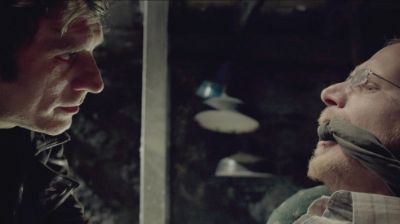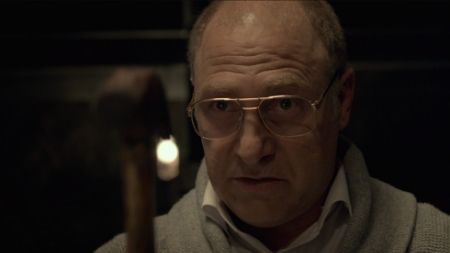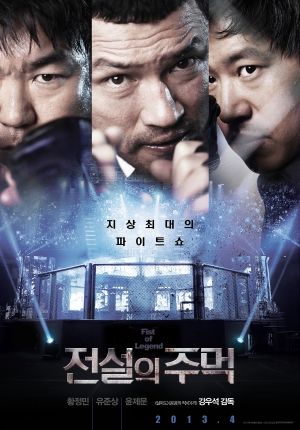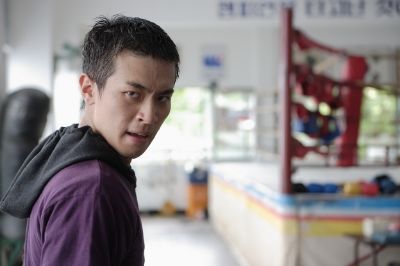
FRANKENSTEIN’S ARMY is the ultimate found footage horror film.
It’s a straightforward, free-of-complications depiction of a Russian platoon’s rescue mission into a remote World War II era Nazi occupied village. What they,
and by proxy we fortunate viewers, find in this presumably alternate history are
monstrous amalgamations of man and machine that decimate their numbers until
the film reel ends. But not before introducing us to a devilish take on the iconic
pop culture figure with a god complex.
One watches the Czech production with a sense that something impossibly esoteric has been unearthed; from the rubble of battle torn ruins or perhaps the
bottom of drawer containing secreted away, classified files. This footage is
imbued with an old stock quality that blankets us with a warm antiquated feeling.
It also makes the viewing feel closer to being a head on experience.
It’s an inherent quality of found footage films that is all too often
neglected. The lurching stops and starts create disorientation and a sense that
physical harm is rapidly descending upon us. Kind of like the most incredibly
conceived of concept for a haunted house attraction ever.
The monstrous creations enlisted in FRANKENSTEIN’S ARMY are
literally the stuff of nightmares. When my dreams go dark, they rarely contain
easily identifiable figures. They tend to be distorted mixtures of various
cultural reference points. That’s what director –‘s inventions are like, adding
another layer to the experience not unlike feeling trapped in a helpless dream.
Another great use of the found footage mode makes it so they do not ever feel
neatly framed. There is no outward acknowledgment that this is a movie. Instead they lurch
awkwardly about, sometimes not even aware of our presence. Threatening to
notice and turn in our direction at any given moment.
Yet they are not without their vintage historic scifi (re: Steampunk) appeal. propeller blades, divers' helmets, and other mechanisms are repurposed in thrilling ways. Terror intersects astonishment.
Also of note is the brilliantly oppressive soundtrack.
Between the fade in and out of thundering, militaristic propaganda dirges are
dense walls of sound. The racket of a giant generator, for instance. When it
fades momentarily, you feel like you’ve been given a reprieve. (You’ll also
probably notice the enthusiastic applause of other viewers.)
Can it not be said that FRANKENSTEIN’S ARMY is a powerful
statement on the horrors of war? Sorry for getting serious while we’re all
glazed over with thoughts of propeller-faced behemoths and other warped
monstrosities, but the instances of anti-heroism in FRANKENSTEIN’S ARMY seem to
form a pretty blunt statement on the subject. There is bullying behavior and
bloodthirsty intent in the part of the team we follow. Nobility appears more in
the meek civilians encountered along the way. And the rescue mission itself is
tainted by hidden agendas. Yes, while the film does operate as a tour of
sensory delights, it does in fact have a plot worthy of keeping your attention
on the interplay between characters.
That Raaphorst has acclaim as an ad director is no
surprise. He has an obvious gift for animating scenes that will remain in
viewers’ unconscious. This probably has a lot to do with FRANKENSTEIN’S ARMY being
a successful exercise in form as well as content. The movie is in fact a shot
in the arm to the realm of creature design, giving recent forerunners in this
twisted art like Yoshihiro Nakamura cause to up their game. His cult-worthy
Tokyo Gore Police has nothing on FRANKENSTEIN’S ARMY.
FRANKENSTEIN’S ARMY premiered at the 2013 Tribeca Film Festival. Its
future fate is of no small amount of intrigue.
Follow this link for some sketches of the creature designs.
But make a point of seeing their blessedly CGI-less animated forms on a large
screen.
Tweet-tivity: @mondocurry






